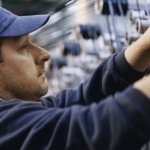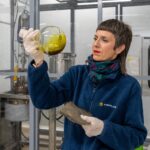SGL Group focuses its carbon fiber production at two major sites in Moses Lake
(joint venture site with BMW Group in Washington, USA) and Muir of Ord (Scotland, UK) in order to further enhance the efficiency of its production network. The production lines in Muir of Ord have been upgraded over the last two years to be capable of producing 24k carbon fibers which have been manufactured solely in Evanston (Wyoming, USA) before. Therefore, SGL Group has now decided to sell its carbon fiber production site in Evanston with approximately 50 employees to Mitsubishi Rayon Carbon Fibers & Composites Inc., a US-based subsidiary of Mitsubishi Rayon Corporation (MRC).
A respective contract has been signed end of December 2016. Closing is expected by April 2017. Any business as well as the customer accounts from Evanston site will be taken over by the other SGL entities. The transaction has a non-material positive impact on the financial statements of SGL Group, primarily in 2016.
“By concentrating our carbon fiber production in one site in North America and one in Europe, we further improve the efficiency of our production network. The carbon fibers from both sites are used in our entire value chain offering high quality composites materials and components to our customers in the automotive, wind energy, and aerospace industry.” says Andreas Wüllner, Chairman of Business Unit Composites – Fibers & Materials at SGL Group.
In Moses Lake, SGL and BMW Group have built the largest and most modern heavy tow carbon fiber plant in the world. The plant, with its state-of-the-art technology, became an integral part of SGL Group’s global production network now also supplying other customers in various industries. Muir of Ord is company’s well-established and highly flexible competence center for carbon fibers in Europe where the group produces a particular broad range of products and materials from heavy tow via oxidized fibers to short cut fibers.
Caption picture N.2:
Andreas Wüllner, Chairman of Business Unit Composites – Fibers & Materials at SGL Group














